On Wednesday, April 17, the Goshen Central School District hosted a presentation conducted by Orange-Ulster BOCES as part of a collaborative effort to share resources with parents on home behavior management. The presentation is available in a printable PDF form here. Below is an accessible version.
Empowering Parents: Strategies for the Home
Lauren Maggio, MSED, BCBS, OUBOCES Division Behaviorist
Lydia Woodard, LCSW, OUBOCES Counseling Team Leader
Behavior is Communication
Frequent behavioral outbursts may be a sign they have not developed the coping skills needed to deal with big feelings:
- Impulse control
- Self-regulation
- Problem solving
- Communicating wants and needs
What are some difficult behaviors in the home?
- Regularly shouting
- Swearing
- Hitting, biting, kicking
- Refusing to follow directions
- Behaviors that disrupt the home environment on a regular basis
Tantrums
- Tantrums and acting out are often a normal part of child development
- Tantrums are often a “learned behavior”
When to get professional help
- When behavior interferes with child’s ability to make or keep friends
- When behavior is causing difficulties in school
- When behavior is dangerous to self or others
Possible causes
- Attention-Deficit Hyperactivity Disorder (ADHD)
- Oppositional Defiant Disorder (ODD)
- Disruptive Mood Dysregulation Disorder (DMDD)
- Anxiety
- Trauma
- Learning Disabilities
- Sensory Processing Issues
- Autism
Roughly 80% of those diagnosed with ASD may have a co-occurring psychiatric disorder which may include:
- Anxiety disorders
- Mood disorders
- Attention-Deficit Hyperactivity Disorder (ADHD)
- Obsessive-Compulsive Disorder (OCD)
- Oppositional Defiant Disorder (ODD)
Emotions are Contagious
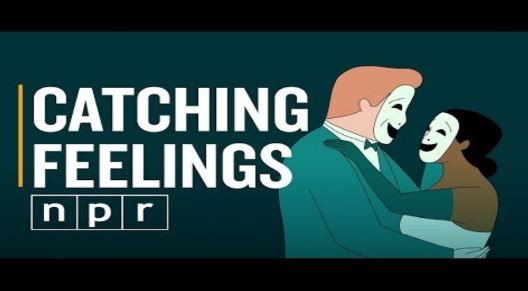
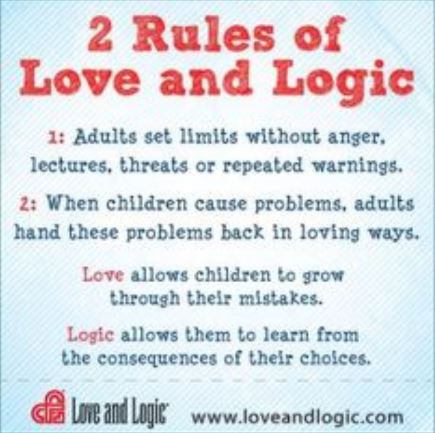
Two Rules of Love and Logic
1: Adults set limits without anger, lectures, threats of repeated warnings
2: When children cause problems, adults hand these problems back in loving ways
- Love allows children to grow through their mistakes
- Logic allows them to learn from the consequences of their choices
- www.loveandlogic.com
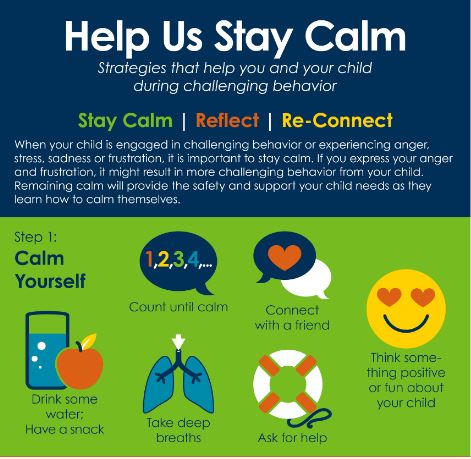
Help us stay calm: Strategies that help you and your child during challenging behavior
Stay Calm | Reflect | Re-Connect
When your child is engaged in challenging behavior or experiencing anger, stress, sadness or frustration, it is important to stay calm. If you express your anger and frustration, it might result in more challenging behavior from your child. Remaining calm will provide the safety and support your child needs as they learn how to calm themselves.
4 Functions of Behavior
- 1: Attention- seeking attention from you, siblings, or peers
- 2: Escape/Avoidance – behaviors to escape or avoid a situation or task
- 3: Access to preferred item and/or activity – may be specific item, activity or sensory experience
- 4: Sensory – these behaviors feel good or serve to regulate them
Replacement Behavior
- Behavior serves a function, therefore we need to replace inappropriate behavior with behavior that will serve the same function.
The ABC’s of Behavior
- Antecedent (A) – What happened directly before the behavior
- ex: Told to turn off the TV
- Behavior (B) – What did your child do?
- ex: Scream, cry, throw the remote
- Consequence (C) – How did you react?
- ex: Yell, send them to their room, ignore, eventually give in
Setting Events
- There may not be an obvious antecedent
- ex: Illness, bus ride, hard day at school
- There may be an underlining issue
- ex: Diagnosis
Reinforcement
- Increases the future likelihood of behavior occurring
- We want to “reinforce” appropriate behaviors – this teaches them!
- ex: You child eats all their dinner, they get desert!/ Big hugs and “good job” after they put their dishes in the sink/ They clean their room, they have 20 mins on the iPad
Proactive Strategies
- Be clear with your expectations – teach/model appropriate ways to request/set up situations
- Get their direct attention
- Review expectations
- Remind throughout and praise good behavior
Routines/Schedules
- Develop and “schedule” or checklist for morning and evening routines
- Have a designated place for items to avoid conflicts later
- ex: school bag, lunch bag, shoes, dirty clothes
- First/Then
- ex: First do your HW, Then you can watch TV
- “First” is always the work, “Then” is always the reinforcer
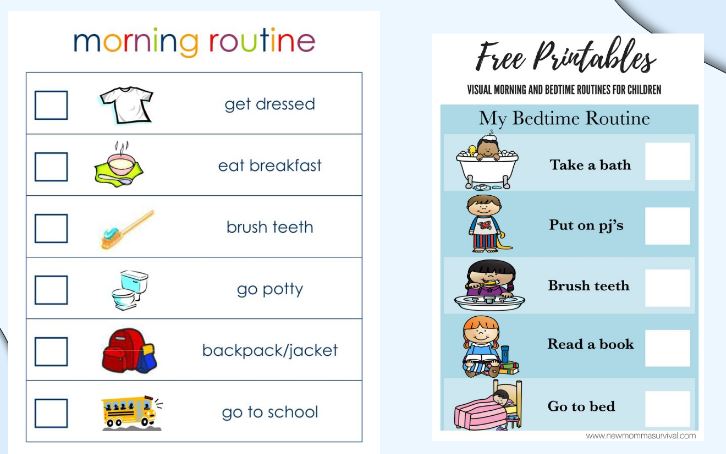
Morning Routine
- Get dressed
- Eat breakfast
- Brush teeth
- Go potty
- Backpack/jacket
- Go to school
Bedtime Routine
- Take a bath
- Put on pj’s
- Brush teeth
- Read a book
- Go to bed
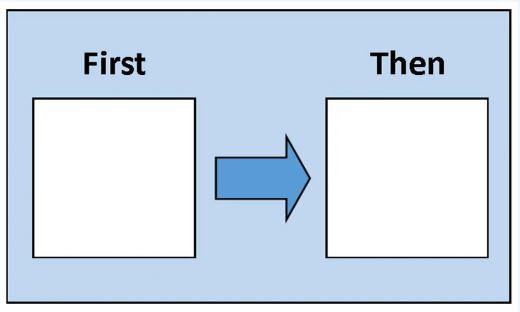
Timers
- While using a toy/electronic
- When dinner will be ready
- Time to start bedtime routine
- Practicing to wait
Timers continued
- Reinforce appropriate communication!
- ex: appropriate asks for more time, without a behavior…. GIVE IT!
Reactive Strategies
- First/Then
- ex: First stop screaming, then you can have your toy back
- Choices – this gives the child a feeling of being in control
- Adjusting expectations
Punishment
- Does not teach acceptable behavior – it suppresses it
- Excessive or constant punishment can cause a child to become desensitized
Rewards
- Vocal praise goes a long way
- Sticker charts
- Working toward a goal
Opportunities for Learning
- Discuss the behavior later, once they are calm
- Use visuals, if needed
- Have a conversation
- ex: “I notice that when you become upset you scream and throw things.”
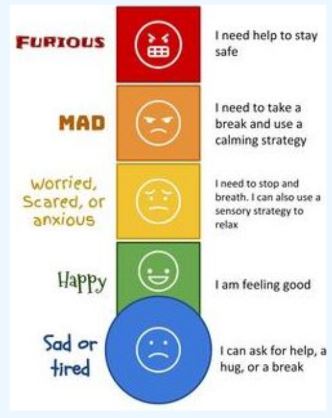
- Furious – I need help to stay safe.
- Mad – I need to take a break and use a calming strategy.
- Worried, Scared or Anxious – I need to stop and breathe. I can also use a sensory strategy to relax.
- Happy – I am feeling good
- Sad or Tired – I can ask for help, a hug, or a break.
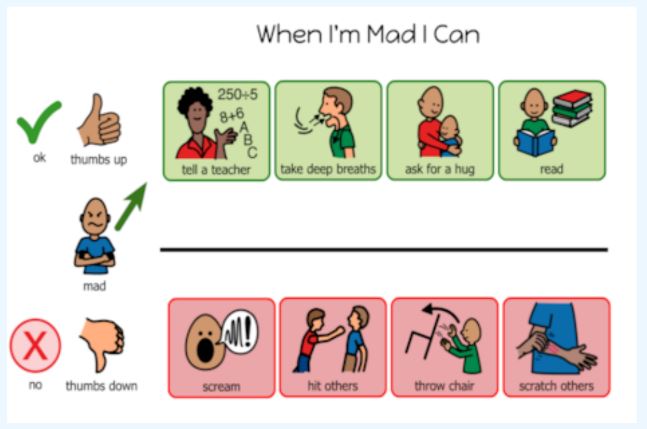
When I’m mad I can:
- Ok: Tell a teacher, Take deep breaths, Ask for a hug, Read
- Not ok: Scream, Hit others, Throw chair, Scratch others
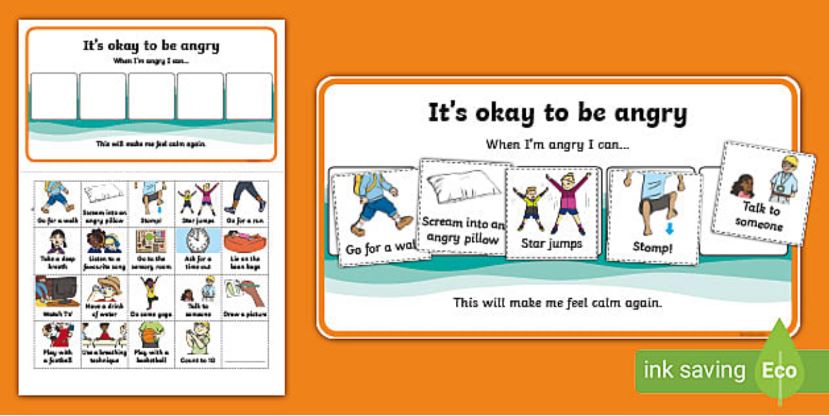
It’s okay to be angry.
When I’m angry I can:
- Go for a walk
- Scream into an angry pillow
- Star jumps
- Stomp!
- Talk to someone!
- Go for a run
- Take a deep breath
- Listen to a favorite song
- Go to the sensory room
- Ask for a time out
- Lie on the bean bags
- Have a drink of water
- Do some yoga
- Talk to someone
- Draw a picture
- Play with a football
- Use a breathing technique
- Play with a basketball
- Count to 100
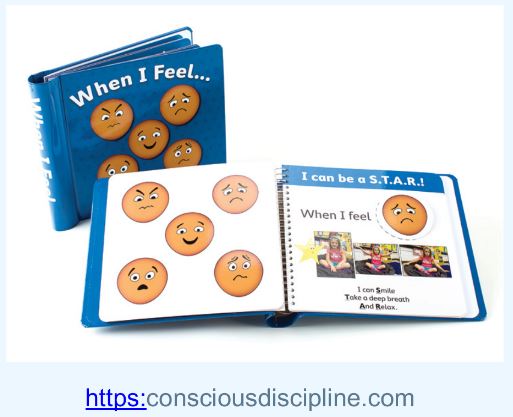
https://consciousdiscipline.com
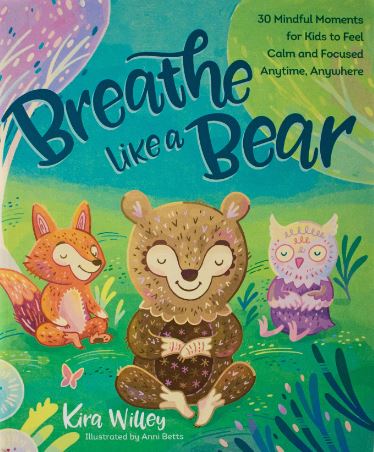
“Breathe like a Bear: 30 Mindful Moments for Kids to Feel Calm and Focused Anytime, Anywhere” by Kira Willey

The 5-4-3-2-1 Grounding Technique
- Acknowledge 5 things that you can see around you.
- Acknowledge 4 things that you can touch around you.
- Acknowledge 3 things that you can hear around you.
- Acknowledge 2 things that you can smell around you
- Acknowledge 1 thing that you can taste around you
#DeStressMonday www.DeStressMonday.org
Mindfulness and behavior management
- Consistent practice
- e.g., committing to a daily exercise, and practicing under calm conditions so that the skill is easier to use under stressed conditions
Other considerations
- Screen time
- Sleep patterns
- Other underlining mental health concerns
- Individuals with ASD often have a co-occurring diagnosis
- Gastrointestinal
What is self care?
“A dysregulated adult cannot regulate a dysregulated child. An exhausted, frustrated, dysregulated adult can’t regulate anybody.” – Dr. Bruce Perry

How can I take care of myself so I can be the best parent I can be? (YouTube video)
- Child Mind Institute: www.childmind.org
Thank You
- Mosner MG, Kinard JL, Shah JS, McWeeny S, Greene RK, Lowery SC, Mazefsky CA, Dichter GS. Rates of Co-occurring Psychiatric Disorders in Autism Spectrum Disorder Using the Mini International Neuropsychiatric Interview. J Autism Dev Disord. 2019 Sep;49(9):3819-3832. doi: 10.1007/s10803-019-04090-1. PMID: 31175504; PMCID: PMC6669096.
- https://www.mondaycampaigns.org/destress-monday/unwind-monday-5-4-3-2-1-grounding-technique
- Harvey AG, Gumport NB. Evidence-based psychological treatments for mental disorders: modifiable barriers to access and possible solutions. Behav Res Ther. 2015 May;68:1-12. doi: 10.1016/j.brat.2015.02.004. Epub 2015 Feb 26. PMID: 25768982; PMCID: PMC4395546.
